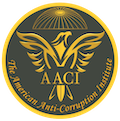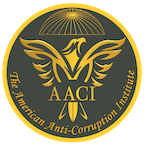Intensive 5 Days CACM Review Course and Exam - Agenda
This agenda is based on the current edition of CACM Review Textbook published by Exam Unit of The AACI. It is an integral part of the Intensive 5 Days CACM Review Course and Exam. The parameters of the review course are available on The AACI’s official blog (click here).
Principles of Fighting Corruption
Integrity
Internal Control (IC)
Internal control is the foundation of detecting fraud and corruption. The Committee of Sponsoring Organizations of the Treadway Commission (COSO) principles and concepts constitute the framework that is widely used in preventing, deterring, and detecting fraud and corruption. Internal Control is not well understood by most decision makers and those charged with governance.
This session discusses the IC definition, objectives, benefits and the building blocks IC.
Internal Control (IC) Components
IC components and their associated principles form the IC concept. The session provides an overview of those components and principles and shows the linkages for fraud and corruption prevention, deterrence, and detection. Many related IC diagrams will be discussed and referred to in the CACM Review Textbook.
Internal Control (IC) Effectiveness
When would an IC be effective? The session discusses the conditions that shall be met to conclude that an IC is effective. In addition, the session discusses the IC deficiencies. It also discusses the IC limitations, including management override of IC.
Blockchain Technology and Internal Control
Blockchain, as a fundamental technology, has the ability to drastically alter the global digital business landscape, with huge implications for practically everything else. As with any disruptive technology, each business must assess the risks, get a deeper understanding of the associated risks, and collaborate to establish the best course of action and mitigate those risks.
When implementing blockchain, the potential implications for Internal Control over Financial Reporting (ICFR), there should be a proper analysis of the impacts on the five components and their respective principles. It is helpful to consider:
- Blockchain’s usefulness in achieving the principles of the 2013 COSO Framework
- New threats or risks that may arise from blockchain implementation that impact the referenced principle
- How to mitigate those risks while seeking the greatest benefit
Foreign Corrupt Practice Act (FCPA)
Congress enacted the U.S. Foreign Corrupt Practices Act (FCPA) in 1977 in response to revelations of widespread bribery of foreign officials by U.S. companies. The FCPA was intended to halt those corrupt practices, create a level playing field for honest businesses, and restore public confidence in the integrity of the marketplace.
The session provides an overall overview of the basic requirements of the FCPA and its relationship with internal control and bribery prevention and deterrence.
Public Accounting Reform and Investor Protection Act (Sarbanes- Oxley or SOx) enacted in 2004
In 2002, in response to a series of accounting scandals involving U.S. companies, Congress enacted the Sarbanes- Oxley Act (Sarbanes- Oxley or SOX), which strengthened the accounting requirements for issuers. All issuers must comply with Sarbanes-Oxley’s requirements, several of which have FCPA implications.
The law aimed to improve financial reporting audit processes and to correct several of board of directors, public accounting, and other practices. It impacted business processes in the U.S. and worldwide.
The session provides a high-level overview of the relevant Titles and Sections in the context of internal control and other significant professional and business issues.
It also provides an overview of the objectives of SOX and its significant requirements.
Foreign Extortion Prevention Act (FEPA)
Fraud and Corruption
Corruption is a business risk. The session provides an overview of the different definitions of fraud, corruption, and emphasizes the duties of board members, executive management and other employees.
It also addresses the misconceptions about fraud and corruption. The session discusses the costs and damages of corruption at the entity level and the country level. It concludes with an overview of internal control effectiveness with respect to selected transaction cycles and their red flags. This includes the revenue and procurement cycles.
Types of Fraud and Corruption – Part 1
Types of Fraud and Corruption
This session discusses the following fraud and corruption schemes:
- Assets misappropriation: cash theft and fraudulent disbursements
- Corruption: bribery, economic extortion, illegal gratuity, and conflicts of interest
- Contract and procurement fraud (Bid-Rigging Schemes)
- Money laundering
- Checks and credit card fraud
The session also provides an overview of the red flags for selected corruption schemes.
Types of Fraud and Corruption – Part 2
Types of Fraud and CorruptionThis session discusses the following fraud and corruption schemes:- Assets misappropriation: cash theft and fraudulent disbursements
- Corruption: bribery, economic extortion, illegal gratuity, and conflicts of interest
- Contract and procurement fraud (Bid-Rigging Schemes)
- Money laundering
- Checks and credit card fraud
Cyber Fraud: Navigating and Preventing Modern Digital Scams
This session addresses cyber scams and provides an overview of various types of scams, such as cyber trading fraud, impersonation scams, loan fee fraud, authorized push payment scams, parcel delivery scams, identity theft, ghost brokers, insurance fraud, charity fraud, and investment fraud. The session also discusses each scam’s nature, mechanisms, damage magnitude, regulatory protective measures, and steps citizens can take to protect themselves. It emphasizes the increasing prevalence of cyber scams and the urgent need for awareness and preventative measures.The session also addresses how blockchain technology and artificial intelligence (AI) serve as transformative tools in the fight against fraud and corruption. Blockchain enhances transparency through its immutable ledger, recording transactions in real time to deter data manipulation and corruption. Decentralized record-keeping fosters accountability, while the traceable nature of transactions aids in fraud detection. AI complements this by analyzing large datasets to detect anomalies, flagging irregularities in financial transactions, and ensuring compliance through predictive analytics and natural language processing. Together, blockchain and AI enhance transparency, accountability, and regulatory compliance, reducing money laundering, curtailing shadow economy activities, and strengthening governance.
Money laundering
Financial Statement Fraud (FSF)
Corporate Governance
Governance is initially a socioeconomic and political concept. It is always objective oriented and tied to accountability. The primary goal of “governance” is the welfare of society. Therefore, people initiate governance, and their well-being is its objective. As a result, whether it is a society, community, government, or organization, there is a form of governance employed to achieve a set of agreed on purposes.
The session discusses the governance definition, nature, and objectives. It also discusses the formal and informal governance mechanisms.
Corporate Governance (Continued)
The session discusses the central role of the board of directors and the board’s’ committees. It also discusses the principles of corporate governance and provides an overview of those governance practices in the small and medium-sized companies. The session concludes with the differentiation between governance and corruption and their interrelationships.
Auditing for Those Who are Charged with Governance and Executive Management
The purpose of an audit of a general purpose financial statements is providing the users of the financial statements with an opinion as to whether the financial statements are presented fairly, in all material respects, in accordance with the applicable financial reporting framework (such as the U.S. generally accepted accounting principles or the IFRS). Presented fairly means the financial statements as a whole are free from material misstatement, whether due to fraud or error.
When a company’s management agrees with an independent auditor to audit the company’s general purpose financial statements, management should adequately understand its responsibilities and those of the independent auditor. The company’s management and the independent auditor usually sign what is called “terms of an audit engagement” which is a business contract. When an audit is conducted in accordance with the International Standards on Auditing (ISAs), the terms of the audit engagement should be in writing.
The session provides a high-level discussion of the following topics:
- The responsibilities of the independent auditor
- The responsibilities of management
- The audit engagement letter (contract)
Auditing for Those Who are Charged with Governance and Executive Management (Continued)
The session follows on the discussion of the following crucial topics:
- The independent auditor’s report
- Modifications in the independent auditor’s opinion
- Written management representation letter, its contents, and objectives
Accounting for Those Who are Charged with Governance and Executive Management
Even though accounting has its global agreed on definition, it is the quantitative financial language of business. Whether managerial or financial accounting, the ultimate objective of its reports is to help and support decision makers to make informed choices and decisions. Therefore, the quality, economy, and effectiveness of such decisions depend not only on the significant characteristics of the reports but also on the ability of users to understand and analyze their content.
This session provides a high-level overview of basic accounting terms and their definitions. It also discusses the structure and contents of the statement of financial position, income statement and statement of cash flows.
Accounting for Those Who are Charged with Governance and Executive Management (Continued)
The session follows on the discussion of the following crucial topics:
- Financial ratio analysis; nature and benefits
- Major financial ratios
- Liquidity ratios
- Activity ratios
- Profitability ratios
- Coverage ratios
Exam Practice Questions
The delegates practice solving real-time CACM exam questions. By the end of the session, a feedback for incorrect answers is provided to enhance understanding and maximize the chances to pass the exam.
Whistleblowing
Due to the nature of fraud and corruption schemes, more than 50% of the cases are uncovered through whistleblowers. Therefore, there is a duty on those who are charged with governance to incentivize whistleblowing and provide all kinds of protections to those who risk their lives to uncover fraud and corruption.
Though, whistleblowing is a thorny and complex topic. There is not a universally accepted legal framework that governs the whistleblowing process. As a result, there are legal complications in defining who is the whistleblower and whether he is qualified for protection under the applicable laws.
Whistleblowing (Continued)
So, what constitutes a whistleblowing policy? what are the elements of the effective whistleblowing policy?
Management and Decision Making
Peter Drucker, the father of modern management, states that the fundamental task of management is “to make people capable of joint performance through common goals, common values, the right structure, and the training and development they need to perform and to respond to change.”
The session provides an overall review of the principles of management, the planning process, and strategic management.
Management and Decision Making
Executive management and those charged with governance perform their duties through decisions. Decisions are informed judgments. Board members and management are expected to make effective decisions. A lack of adequate knowledge about what makes an effective decision will significantly increase the risks of failure of decisions made by the board or executive management. Strategic decisions, usually made by the top management and the board, have significant consequences and effects that may reach farther than the boundaries of the organization.
The session provides an overview of specific and significant aspects of the decision-making process and what constitutes an effective decision. It shows the pitfalls or traps of the decision-making process.
It also discusses specific accounting and finance concepts that enhance and support the executives and those charged with governance decisions in various situations such as breakeven point.
Exam Practice Questions
The delegates practice solving real-time CACM exam questions. By the end of the session, a feedback for incorrect answers is provided to enhance understanding and maximize the chances to pass the exam.
The Global Commitment to Fight Corruption
The Financial Action Task Force (FATF)
FATF establishes standards and promotes the effective implementation of legal, regulatory, and operational measures to combat money laundering, terrorist funding, proliferation financing, and other risks to the integrity of the international financial system.
The FATF Recommendations are the international standard countries should adopt and implement taking into consideration local circumstances.
Over 180 nations have adopted the Recommendations, making them the international standard for Anti-Money Laundering and Countering the Financing of Terrorism (AML/CFT).
United Nations Convention against Corruption (UNCAC)
It is the only legally binding universal anti-corruption instrument. The Convention’s far- reaching approach and the mandatory character of many of its provisions make it a unique tool for developing a comprehensive response to a global problem. The vast majority of United Nations Member States are parties to the Convention. The Convention covers many different forms of corruption, such as bribery, trading in influence, abuse of functions, and various acts of corruption in the private sector.
The session provides a high-level overview of the Convention and discusses the concept of the “Rule of Law.”
The OECD Anti-Bribery Convention
The session discusses the OECD Anti-Bribery Convention, a groundbreaking international legal instrument aimed at combating corruption in international business transactions. The Convention, effective on February 15, 1999, criminalizes the bribery of foreign public officials, requiring signatory countries to implement laws that make it a criminal offense to offer, promise, or give undue advantages to foreign public officials to influence their actions. It mandates effective, proportionate, and dissuasive sanctions, including imprisonment and monetary penalties, and requires mechanisms for international cooperation and mutual legal assistance to ensure consistency in prosecuting cross-border bribery cases. The Convention also defines key terms, such as “foreign public official,” and applies broadly to all levels of government and public functions in foreign jurisdictions, to curb corruption’s harmful impact on economic development, fair competition, and public trust in governance.
French Anti-Corruption Agency (AFA) Guidelines and the Corporate Sustainability Reporting Directive
This session discusses the guidelines issued by the French Anti-Corruption Agency (AFA) on October 16, 2024, and the relevant Corporate Sustainability Reporting Directive (CSRD). The AFA’s recommendations are designed to support companies, especially those not previously covered by France’s Sapin II law, in establishing robust anti-corruption measures and complying with new sustainability reporting obligations. These guidelines highlight the importance of effective systems for preventing and detecting corruption, comprehensive anti-corruption training, and whistleblowing mechanisms. By addressing these requirements, the AFA aims to enhance corporate accountability and transparency in combating corruption.
The UK’s Bribery Act of 2010
The UK Bribery Act of 2010 is a landmark legislation aimed at combating bribery in both domestic and international contexts. It criminalizes offering, giving, receiving, or soliciting bribes, as well as failing to prevent bribery within organizations. A key provision is the strict liability offense for corporations that fail to implement “adequate procedures” to prevent bribery. The Act applies broadly, covering UK entities, individuals, and foreign companies conducting business in the UK. With severe penalties, including unlimited fines and imprisonment, it sets a global standard for anti-bribery compliance and emphasizes transparency, accountability, and ethical business practices.
Review and Practice Questions
The session highlights specific major concepts and emphasizes on the major points discussed throughout the review course.
The delegates practice solving real-time CACM exam questions. By the end of the session, a feedback for incorrect answers is provided to enhance understanding and maximize the chances to pass the exam.
CACM Official Exam
This session is dedicated for the delegates who opt to sit for the CACM exam.
“Certificate of Attendance” issued by The American Anti-Corruption Institute (AACI) when a delegate attends at least 80% of the programs’ designated time.
Delegates who Pass the CACM exam receive the CACM Certificate and its package within 45 business days. – PDF soft copy.
The AACI conducts the Intensive 5 Days Review Course for public and as an in-house program for institutions ( public, private, or non-profit) aspiring to bring about institutional change to prevent and deter fraud and corruption.
Registration for the Live Online CACM Review Course Via ZoomFor further information click here to read the CACM FAQ, or contact us.
Share via:
The American Anti-Corruption Institute (AACI)
Together, Empowering Tone at the Top

Click here for an overview of The AACI. You may also download its PowerPoint presentation (PDF)
The AACI’s Official Blog
This site is the official blog of The American Anti-Corruption Institute (AACI). It is an integral part of The AACI’s Media and Public Relations Dept. We also publish here our and others news, opinions, research, and white papers.
Launching The AACI’s University Initiative in Africa
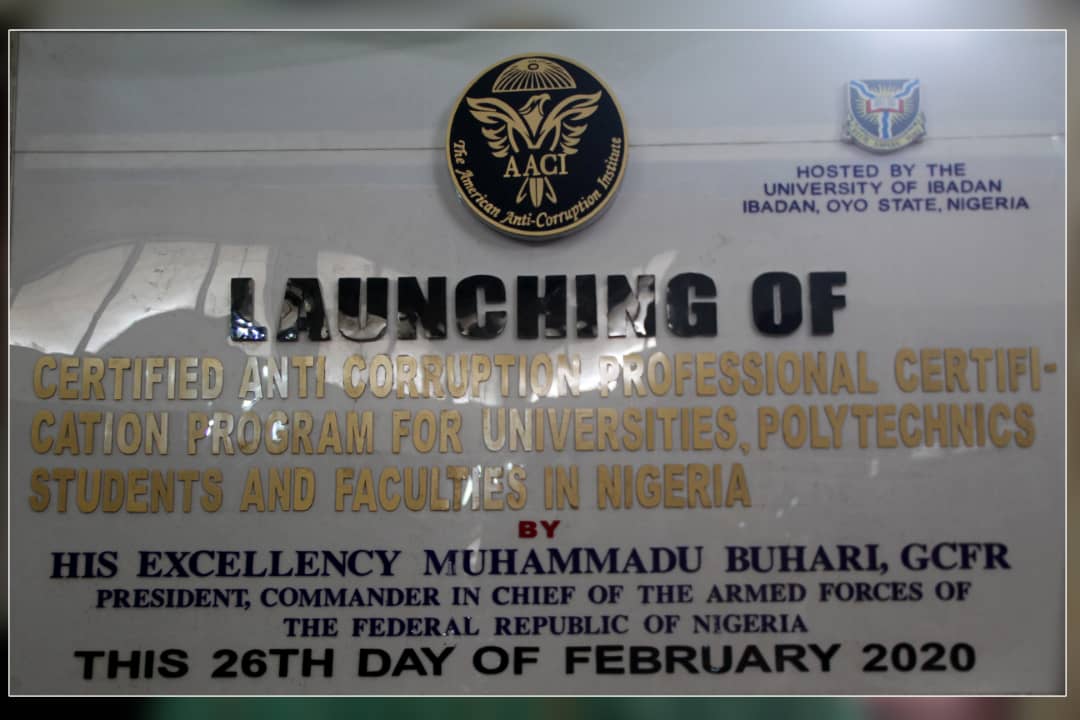
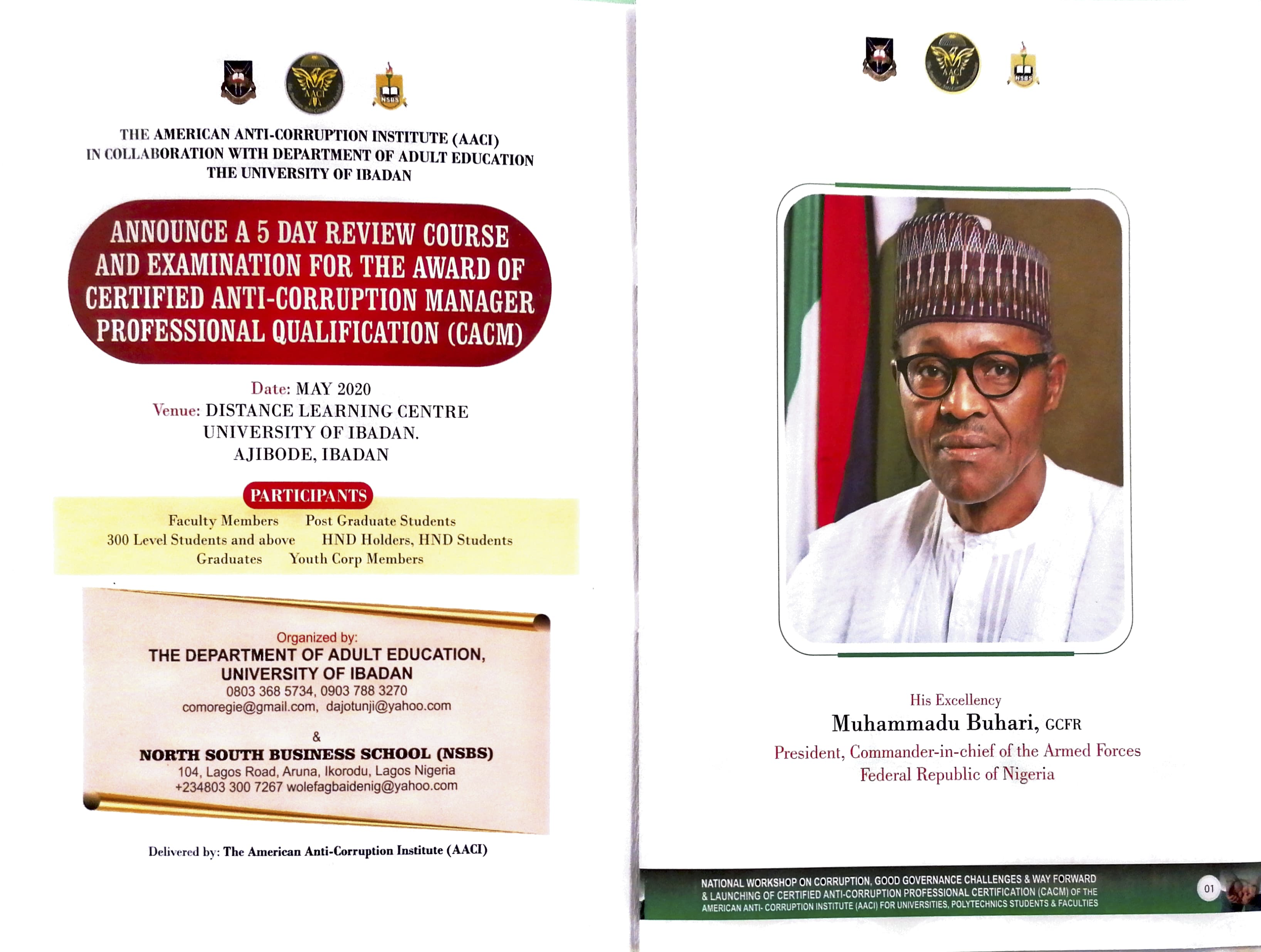



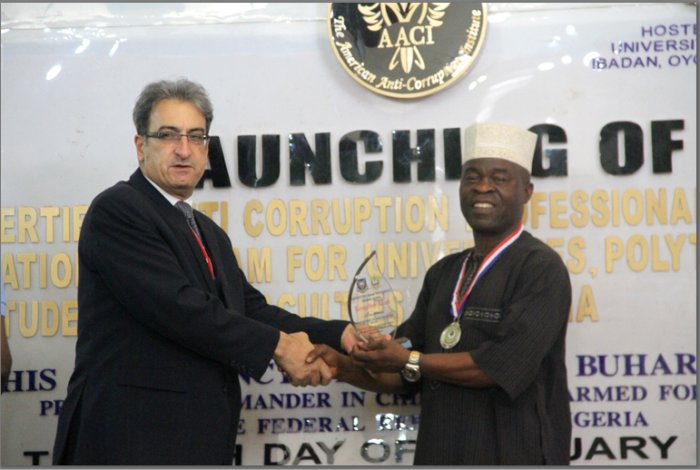

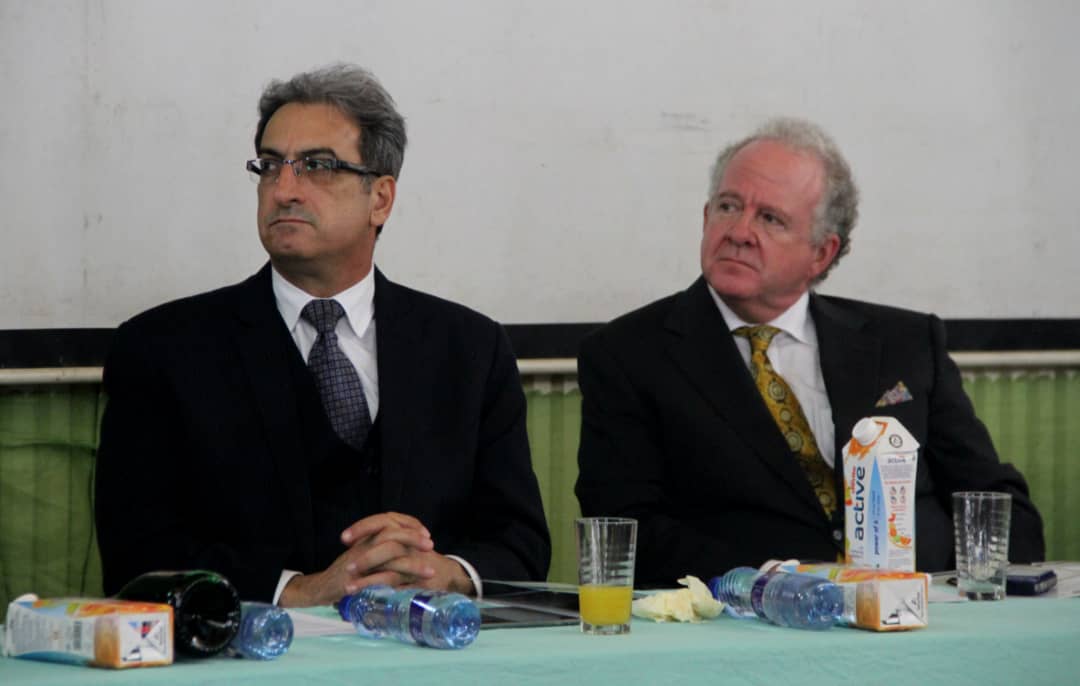
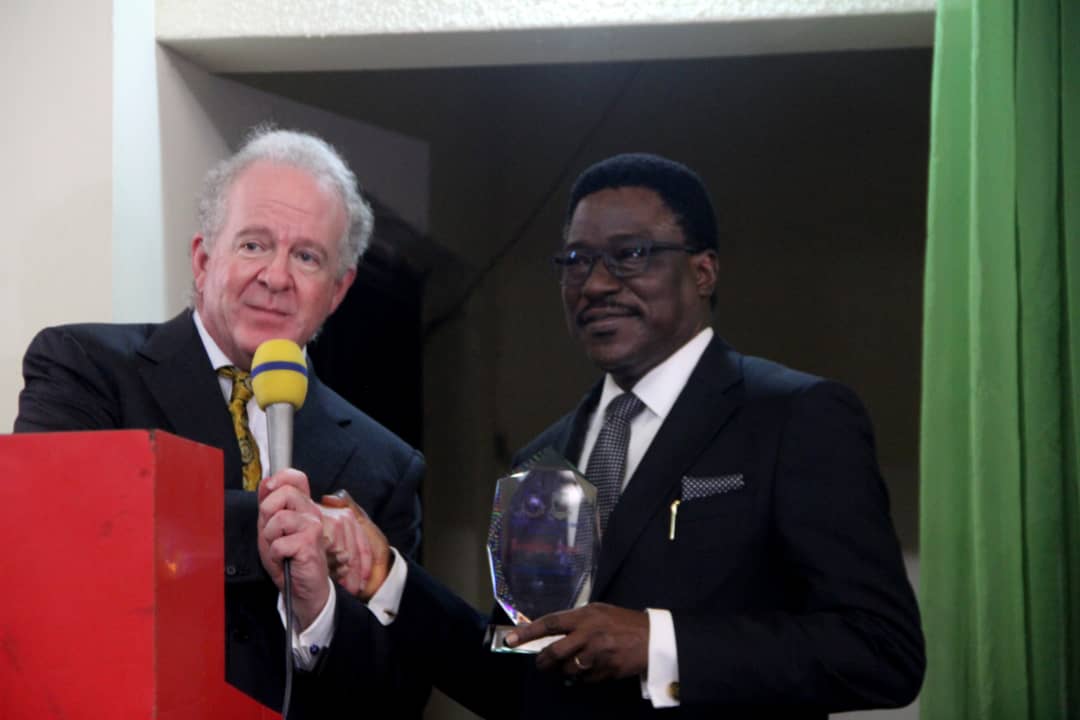




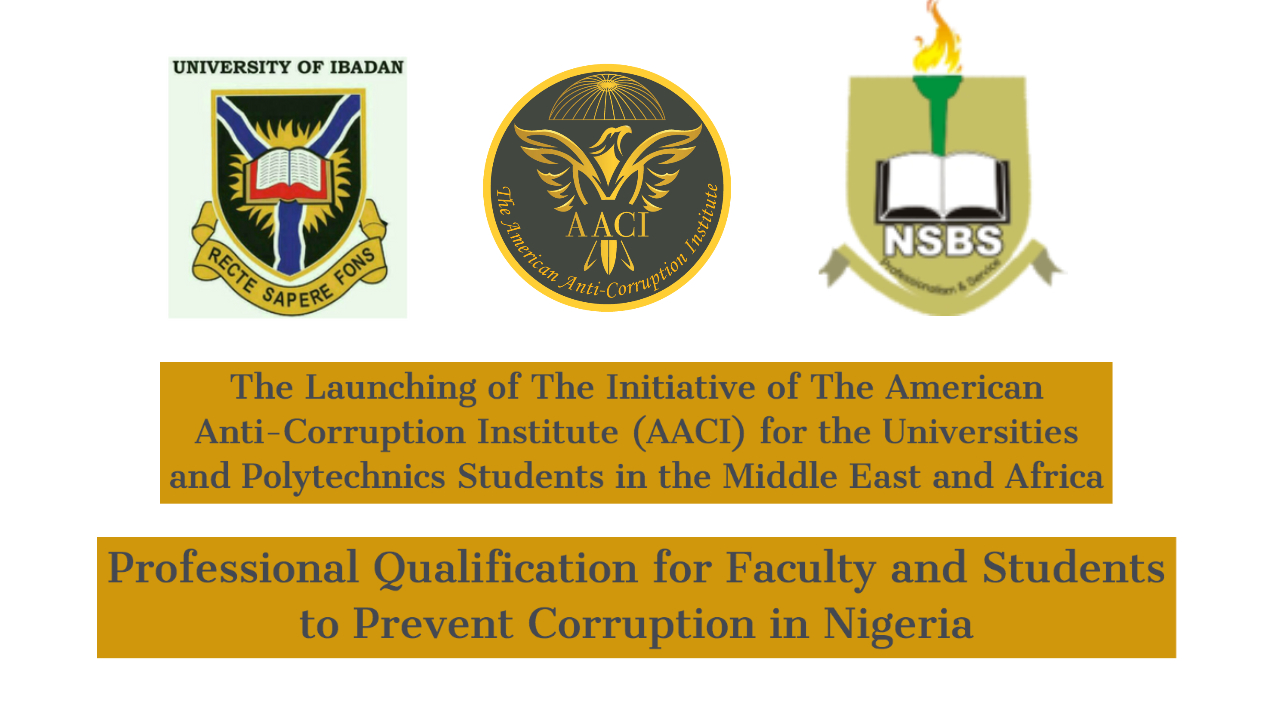
Anti-Corruption Case Contests at Qatar University
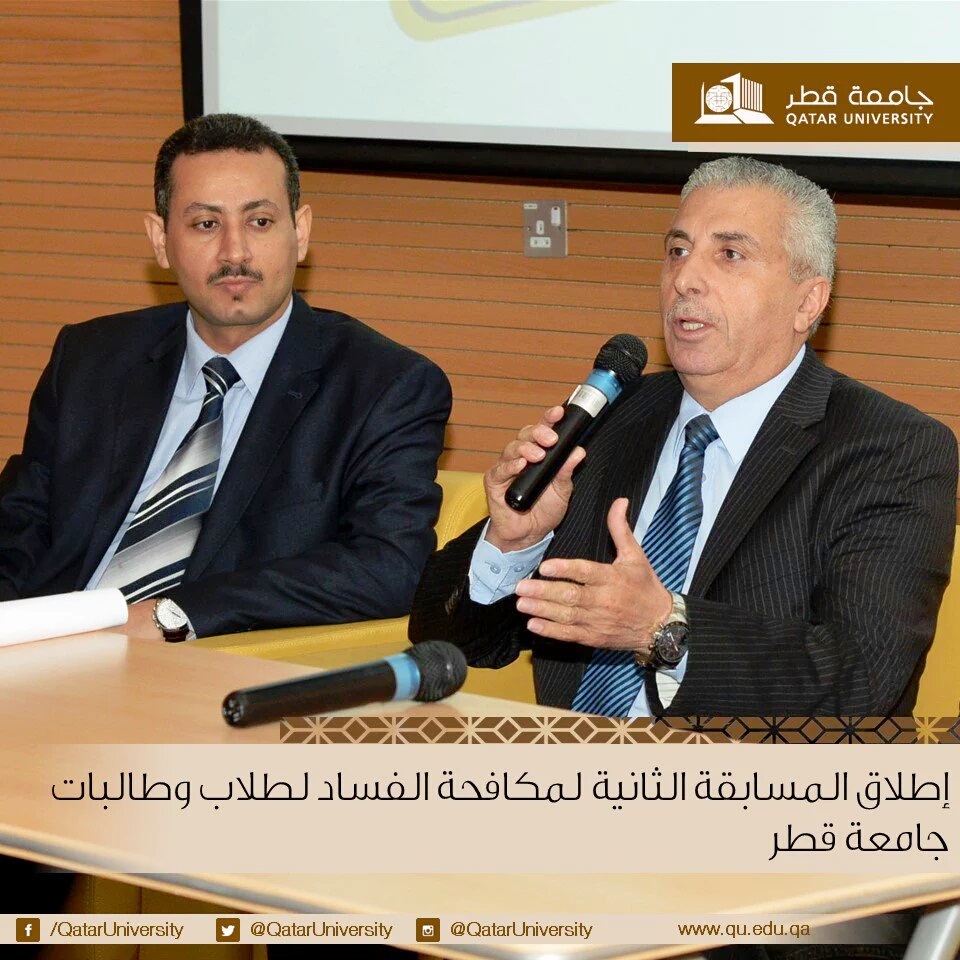
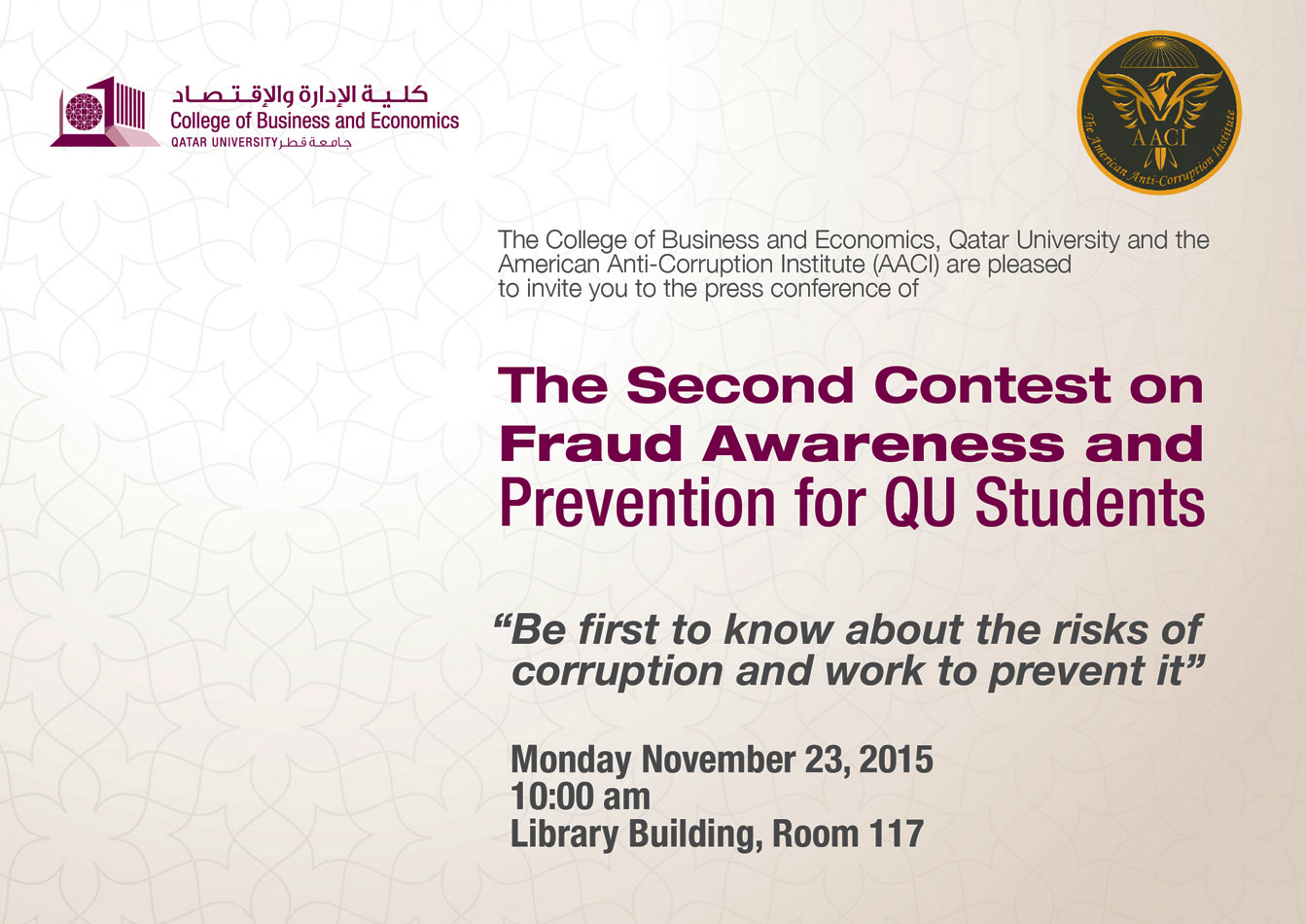
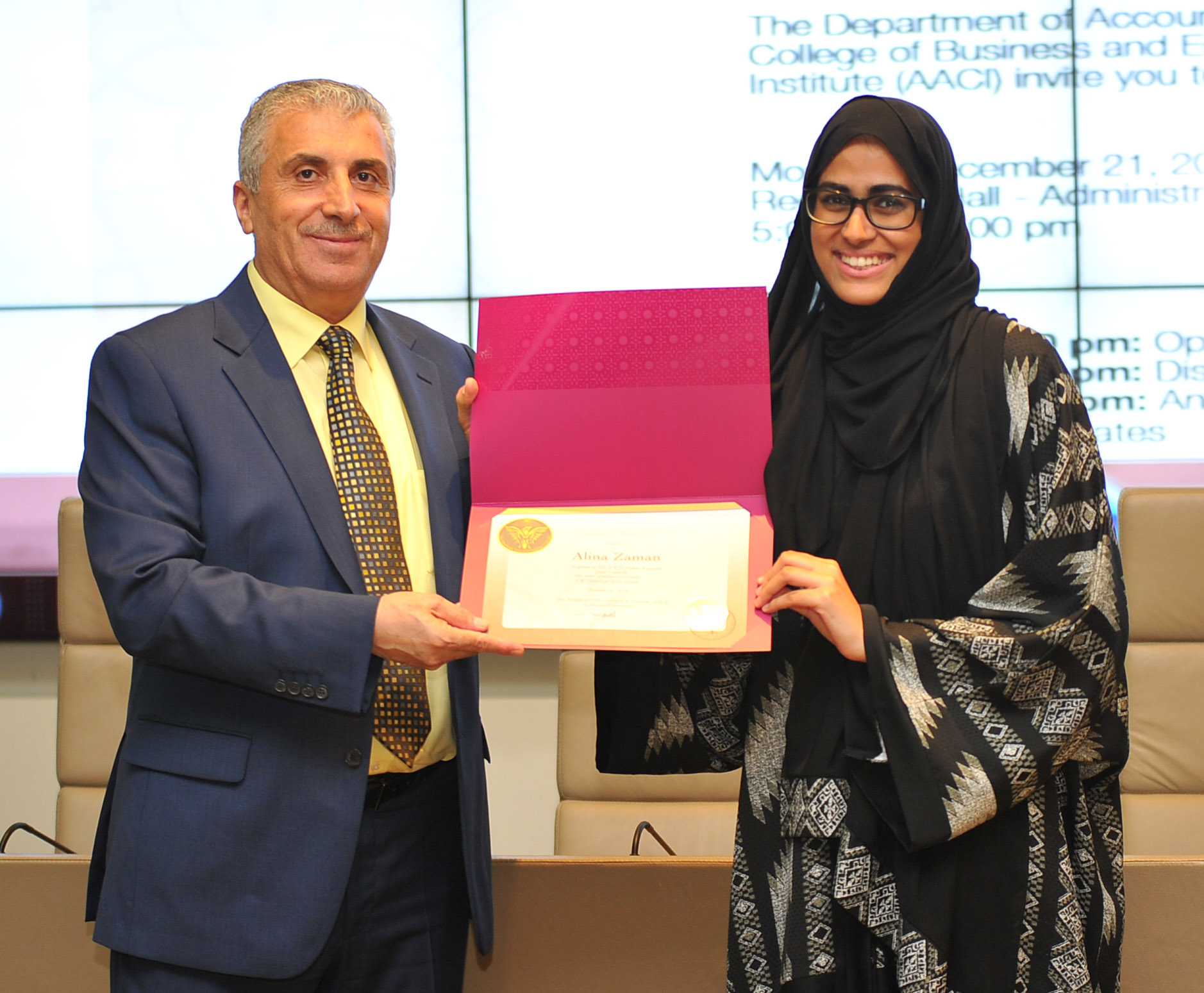

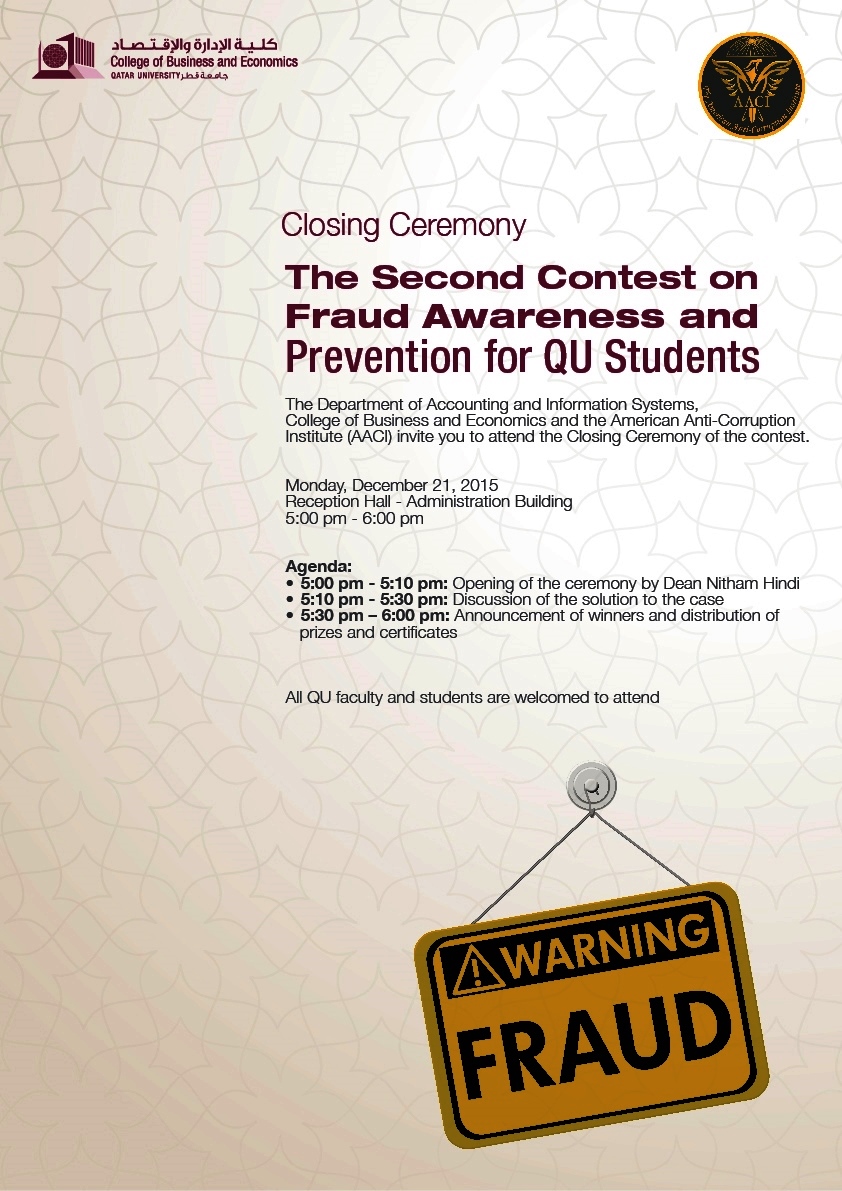


The AACI in Qatar, 2013
University of Ibadan: The First African University Leading the Fight Against Corruption
Recent Posts
- Universities as Structural Actors in Corruption Prevention
- International Anti-Corruption Day: A Reminder That Leadership Still Determines Everything
- When Justice Bends, Corruption Takes Control
- Implementing an Effective Whistleblower Programme in 2025: A Practical Guide Aligned with The AACI Standard SFC 280 and French & OECD Frameworks
- Inside a Corruption-Free Presidency – Part 2
The AACI’s View
They are the official opinions of The American Anti-Corruption Institute (AACI). Our vision, mission, and code of ethics provide the guidelines for our views. When we issue an opinion or express our perspective on a relevant matter, we expressly state that this is The AACI’s view. We publish our beliefs, ideas, and attitudes on our websites (theaaci.com, theaaci.net, and theaaci.org), The AACI official blog, and The AACI social media accounts ( Facebook, Twitter, and Instagram)
Certified Anti-Corruption Manager (CACM)
CACM Review Course and Exam
University of Ottawa


Opinions
The AACI publishes opinions and contributions written by some of its employees, management, and directors. It also publishes contributions from other experts, academicians, and professionals.
Views and opinions expressed under “Opinions” of this blog or at The AACI’s website are those of the authors and do not necessarily reflect the official policy or position of any other agency, organization, employer or The American Anti-Corruption Institute (AACI).

Categories
Archives
Anti-Corruption Resources (Arabic)
- المعهد الأمريكي لمكافحة الفساد
- ترخيص المؤسسات للوقاية من الفساد
- قواعد الشفافية والحماية من الفساد وتأثيرها على توفير بيئة تشريعية داعمة لقضايا المرأة
- مدير مؤهل لمكافحة الفساد
- مصادر بالعربية:مأسسة الوقاية من الفساد
- نشر المعرفة المتخصصة والإستثمار في الوقاية من الفساد
- الدور الفعّال للقطاع الخاص في الوقاية من الفساد
- دور مجلس الإدارة والإدارة التنفيذية في الوقاية من الفساد والاحتيال
- دور الجامعات العربية في الوقاية من الفساد
- المواطن العربي البسيط : مدير مؤهل لمكافحة الفساد
- الفساد في القطاع الصحي: الشرق الأوسط وشمال إفريقيا
- سيادة القانون: الفجوة ما بين الإرادة السياسية والتطبيق
- الحوكمة في قطاع الخدمات الصحية
- مكافحة الفساد بين الواقع والمأمول
